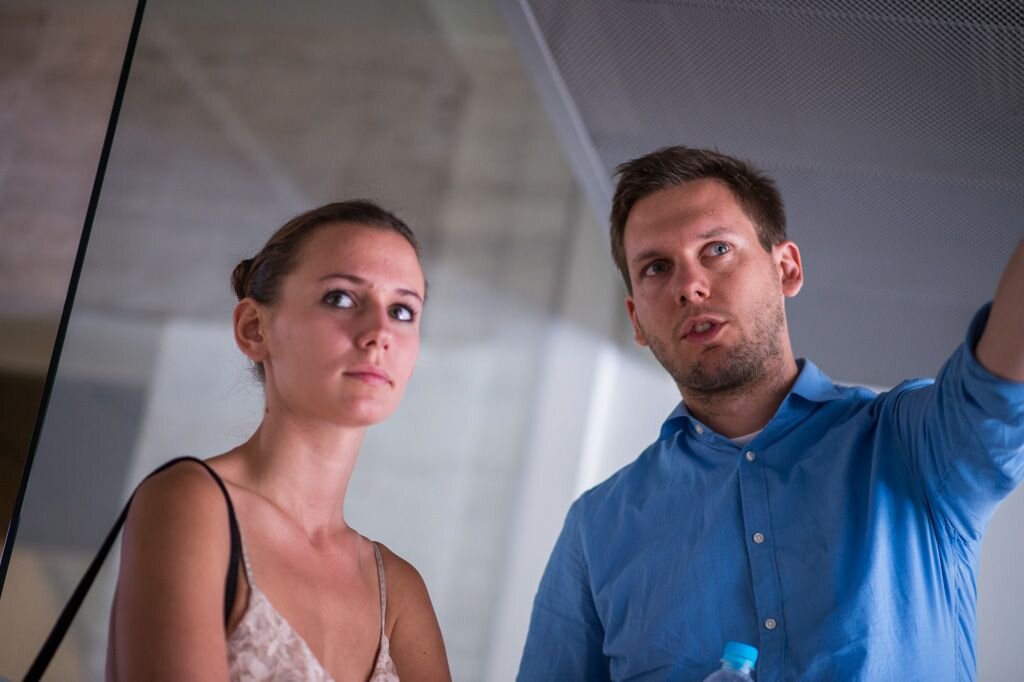Tradition and innovation: the Valley of Arts, where the Design Terminal team will set up shop this summer, will introduce a new mobile app. Talks, a design fair, a tech exhibition, startuppers, Lőrinc Barabás, Hősök and Dj Bootsie will all be there. We talked to Valley of Arts chief Gergely Böszörményi Nagy.
Nagyon Balaton: Relaxing, getting away from the drag of big city life - this is the motivation you gave for Design Terminal setting up a venue in the Valley of Arts. What was attractive about this festival for you?
Gergely Böszörményi Nagy: It has been among our plans for a while to bring together the players of the Hungarian creative scene outside the context of work. We cooperate with them professionally in several areas from incubation to urbanism. This way we can build a community in a more casual and informal way. Why Kapolcs? There are two reasons: on the one hand, we have received an exciting and humbling invitation from the organizers to help revamp the festival. We agreed that this aim was timely, and we firmly believe that there is a form this absolutely prestigious event could take to be engaging for young people and the business world at the same time. On the other hand, the Hello Wood crew will set up camp just around the bend from the venue, in Csórompuszta. We joined forces with them to dream up what the festival location of Design Terminal, to be found in one of the central yards, should look like. We all hope that the public will also find it interesting and exciting.
Nagyon Balaton: What kind of programs do you have in store?
Gergely Böszörményi Nagy: We would like to make unusual collaborations happen, collaborations which wouldn’t normally occur during the rest of the year. For example, beatmaker and developer of the BP Clothing brand Bence “Benskifater” Simon will confer with Kapolcs mayor Mrs. Gyula Márvány, and Balatonakali caterer Béla Tóth will sit down with the creators of Cukorka - Sweetfabric Budapest. The topics of city vs. rural life, the possibilities of building creative zones and clusters as well as the significance of rustic inspirations in design will take centre stage. Such key creative figures will join the discussions as the founders of Pos1t1on, Ivanka and LEN Architects, Bridge Budapest leader Vera Pistyur, fashion designer Ági Kovács, sculptor Gábor Miklós Szőke and countless others. We also think it is important that praised and respected personalities of the community are introduced from a new perspective along with a professional point of view. Leonardo inventor Dani Rátai will share his thoughts on family, while the Hello Wood team will talk about school and learning. Naturally, a design fair featuring selected works by Hungarian designers will take place, as will a tech exhibition with up-and-coming startups under the leadership of the AVEC incubator program. Excitement will continue to run high in the Design Terminal yard: Lőric Barabás, Juci Németh, Dj Bootsie and Hősök will all pay a visit.
Nagyon Balaton: How sharp is the Pest-countryside contrast in the startup world? What are the chances of new designers and entrepreneurs like outside the capital?
Gergely Böszörményi Nagy: Representatives of the creative sector and innovation are primarily at home in big cities all over the world. What is more, they are the engines of the ever-more spectacular trend prompting companies to move from the suburbs, the default location in the last decades of the previous century, to the most central districts. Suburbia is replaced by downtown. Firms relocate from the Silicon Valley to nearby San Francisco, and the startup hubs of Europe are established in metropolises instead of industrial parks. The main motivating factor behind this trend is the denser cultural fabric and the consequent plethora of programs, the proximity of existing and potential partners and the possibility of personal connections. The fact that we are a small country is a particular advantage in this regard: Budapest is accessible in no time from almost any corner of Hungary. The business community based in the capital is not impossible to conquer even if you don’t want to leave your birthplace entirely behind. Litracon glass concrete from Csongrád, GreenZero studio from Egerszalók and the Sopron-based furniture design company Sixay are prime examples.
Nagyon Balaton: Do you know any Balaton initiatives that could set an example?
Gergely Böszörményi Nagy: My friends and I discovered an old mill on the edge of Hegymagas in the spring. A father-son duo runs a family business there making cheese. Károlymalom is a real underground workshop, as it does not even supply cheese to the Káptalantóti market, a popular spot among local producers; its products are only available on the premises. Drop in if you are in the area.
Nagyon Balaton: Which part of the lake do you like to visit the most?
Gergely Böszörményi Nagy: My favourite is the Balaton Uplands, the Csobánc vineyards in particular. The colourful community tending the many press houses, the Jewish cemetery near Diszel, which has almost entirely been reclaimed by the forest, and the ruins of the Gyulaffy Castle on the hilltop, of course. The view of the surrounding area is prettiest from the Csobánc, as it was discovered by Pál Rockenbauer and the team of the popular television program, Másfélmillió lépés Magyarországon (One and a half million steps in Hungary). This is where we watched the solar eclipse from fifteen years ago, on 11 August 1999.




